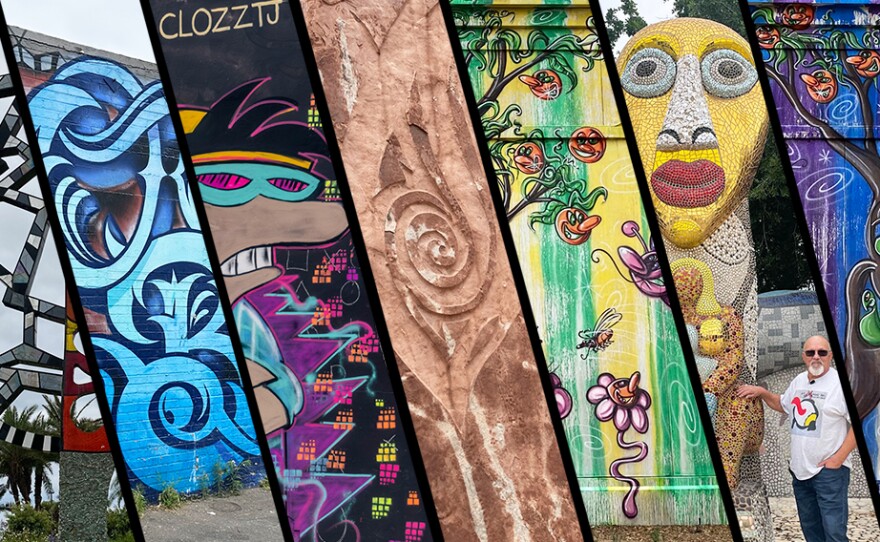Note: This story is part of an ongoing series about public art in the San Diego region.
Compared to San Diego, public art in Tijuana’s Playas de Tijuana neighborhood feels like a free-for-all.
The oceanfront neighborhood is full of public art. Colorful murals pop against Tijuana’s mostly gray backdrop. Even the U.S.-Mexico border wall is decorated with portraits and landscapes from local artists.
Artist Carlos Rodriguez doesn’t have to secure city permits or get approval from a public arts commission. He just has to get the green light from a local property owner, and make sure the local art critics are OK with it.
“You show up and paint,” he said. “If the cops see that you’re not doing something that’s too weird or something they don’t like, they won’t say anything.”
This kind of environment is liberating. It encourages artists to get their work out there. But it comes at a cost.
The laissez-faire approach creates more freedom compared to San Diego, but less funding opportunities as well. Artists are their own advocates. When it comes to public art, they negotiate directly with landlords.
Some landlords are shrewd negotiators, Rodriguez said.
“Sometimes they’ll tell you, ‘Hey, I’m going to give you materials but you’re going to basically paint for free,’” he said. “There’s nothing to win there except you get to display your art in a public spot. But you need to make money out of it too.”
Public funding for art is hard to come by. One university offered Rodriguez free classes in exchange for a mural a few years ago, but that’s all of the public support he’s received.
There are public art programs out there, he said, but they aren’t accessible.
Lack of public funding makes it difficult for street artists like Rodriguez to make a living. He supplements his income by working in a call center and sells commissioned art pieces through social media.
Still, Tijuana has a vibrant art scene. One that reflects the city’s diversity — a rich mix of immigrants, deportees and Mexicans from other parts of Tijuana who came to the border for economic opportunities.
“You get a little bit of the different cultures, backgrounds, and ideas,” Rodriguez said.
These diverse voices put their own stamp on Tijuana — sometimes holding up a mirror at some of the city’s issues.
Like Rodriguez’s latest mural, which he did with fellow artist Javier Rojas.
The colorful mural shows dogs surrounding a giant bright red heart with the words, “La Familia No Se Abandona” written on it — which translates to “Don’t Abandon Family.”
“There’s a lot of stray dogs,” he said. “People buy dogs thinking they’re going to be small, and they grow big. And what do they do? The first thing they do is throw them out to the street.”










